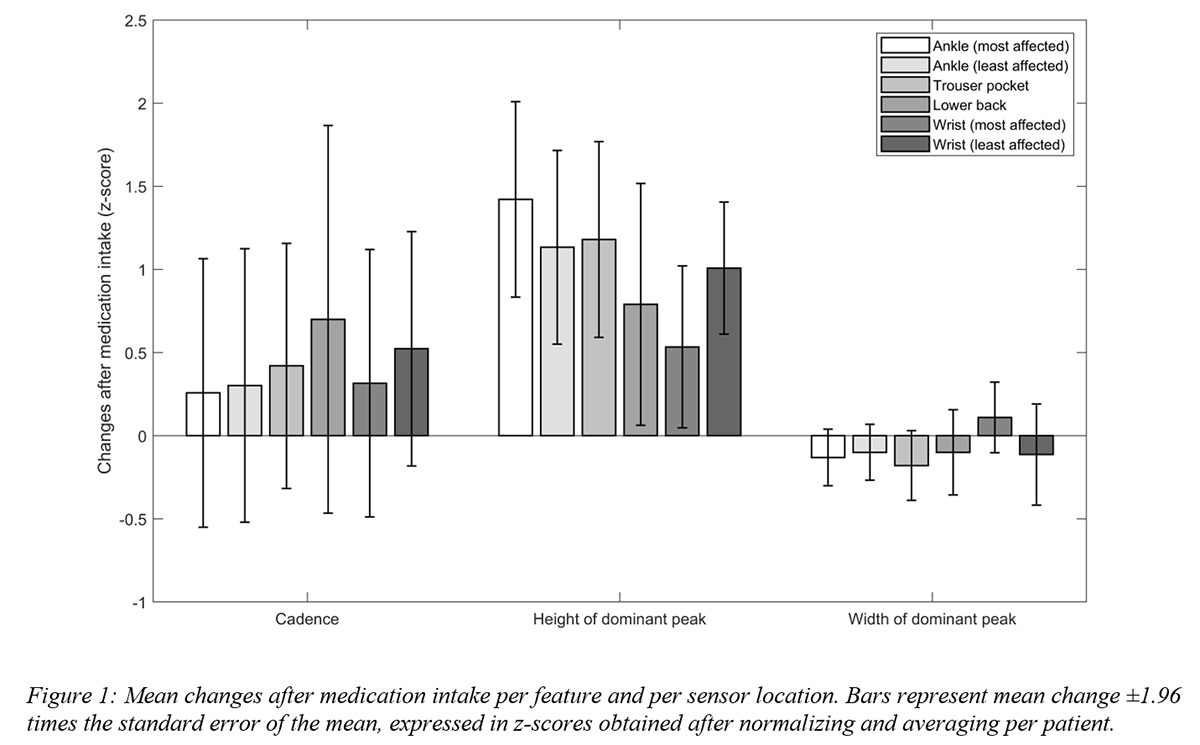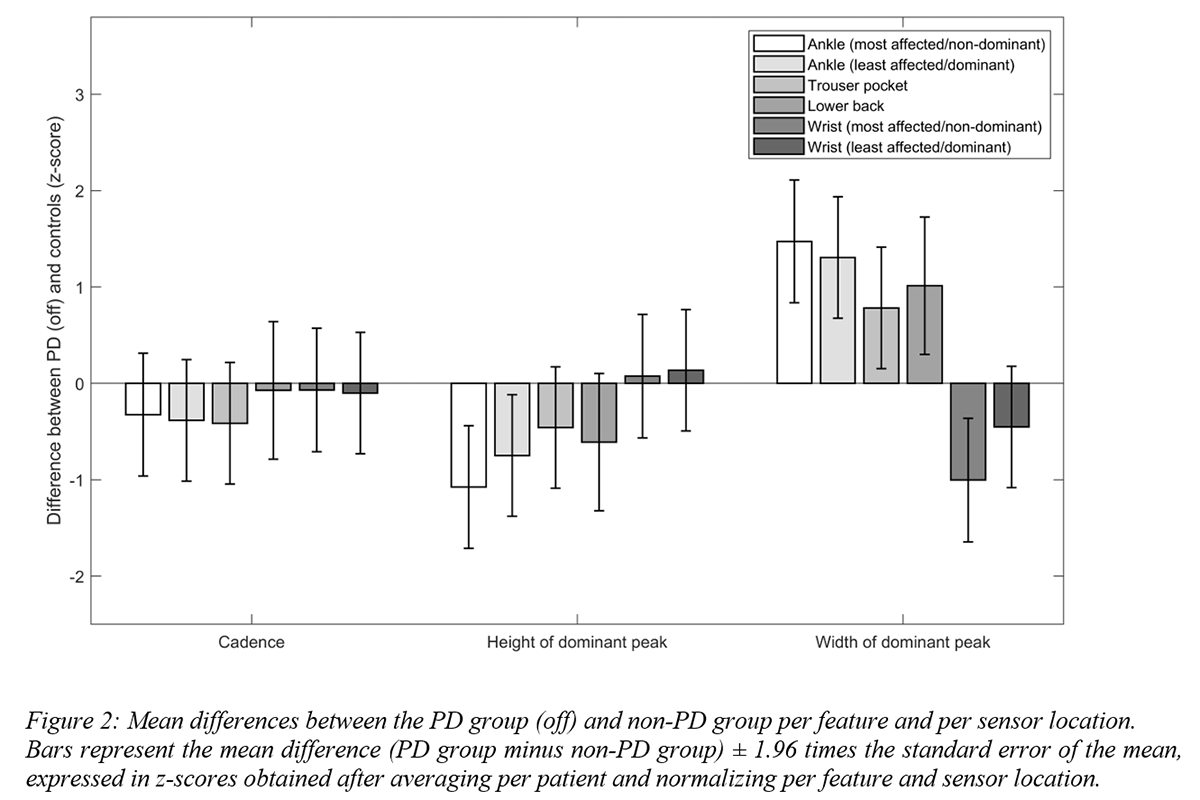Session Information
Date: Tuesday, September 24, 2019
Session Title: Parkinsonisms and Parkinson-Plus
Session Time: 1:45pm-3:15pm
Location: Agora 3 West, Level 3
Objective: To assess the feasibility of using real-life gait performance derived from a single wearable as a marker for motor fluctuations in Parkinson’s disease (PD).
Background: Wearable movement sensors have been used successfully to characterize bradykinetic gait in PD patients, but most studies have been conducted in highly controlled laboratory environments.
Method: In the Parkinson@home Validation study we included 25 PD patients with motor fluctuations and 25 age-matched controls. Participants performed unscripted usual activities at home for at least one hour, while wearing sensors on both wrists and ankles, on the lower back and in the front trouser pocket. In PD patients, this was done twice: after overnight withdrawal of dopaminergic medication and one hour after medication intake. After pre-processing the accelerometer signal from each device, gait segments of 25 sec were extracted based on manual video annotations. The power spectral density for each segment was estimated using Welch’s method, from which the height and width of the dominant frequency and cadence were derived. To be included in the analyses, participants needed to have ≥10 gait segments.
Results: In 18 PD patients (age 64.3±5.7 [mean±SD] years, 11 men, MDS-UPDRS part III off 42.4±14.0) and 24 controls (age 63.4±10.1 years, 13 men) ≥10 gait segments were available (37±18). The ankle of the most affected side was the most responsive position and the height of the dominant frequency was the most responsive property to dopaminergic medication (fig1), increasing >1 intra-person SD (iSD) post dose in 11 patients. Interestingly, cadence increased >1 iSD in 5 patients, but decreased >1 iSD in 3 patients, possibly pointing to varying compensation strategies. Although the width of the dominant frequency did not change >1 iSD in any patient after medication intake, it was elevated in PD patients compared to controls (fig2), suggesting relative insensitivity to dopaminergic therapy. The power spectral density during gait was least consistent in the wrist sensors because of real-life behavioral factors such as putting hands in pocket and making gestures.
Conclusion: It is feasible to detect differences between on and off in unscripted gait in PD patients using a single device. Future work will address confounders and will include the evaluation of a novel probabilistic and integrative approach to gait detection and quantification in daily life [1].
References: 1. Y.P. Raykov, L.J.W. Evers, R. Badawy, M.J. Faber, B.R. Bloem, M.A. Little (2018). Probabilistic modelling of gait for remote passive monitoring applications. Conference on Neural Information Processing Systems (NeurIPS) 2018, Machine Learning for Health Workshop (ML4Health).
To cite this abstract in AMA style:
L. Evers, J. Raykov, R. Badawy, K. Claes, M. Meinders, J. Krijthe, T. Heskes, M. Little, B. Bloem. Real-life gait performance as a marker for motor fluctuations: the Parkinson@home Validation study [abstract]. Mov Disord. 2019; 34 (suppl 2). https://www.mdsabstracts.org/abstract/real-life-gait-performance-as-a-marker-for-motor-fluctuations-the-parkinsonhome-validation-study/. Accessed December 12, 2025.« Back to 2019 International Congress
MDS Abstracts - https://www.mdsabstracts.org/abstract/real-life-gait-performance-as-a-marker-for-motor-fluctuations-the-parkinsonhome-validation-study/


